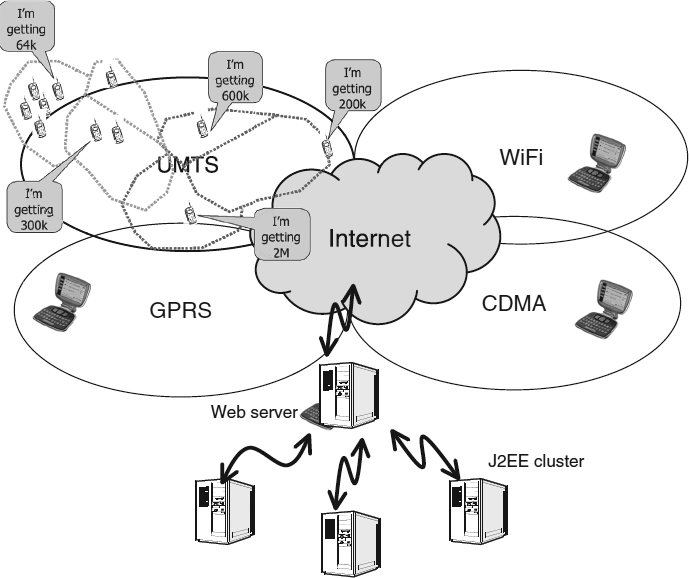12.4 MOBILE BROADBAND NETWORKS
Since the design of the UMTS air interface was underway, it was clear that the promised 3G data rates of 2 Mbps would not be enough for data-hungry services like music downloading and media streaming. The challenge in a mobile network is that the resources are shared in each cell, so 2 Mbps is not what each user is likely to see in a cell with multiple users accessing data services. In other words, capacity is still an issue. This is even more so for operators wishing to offer flat-rate data tariffs, which is looking more and more likely as the only way to attract users onto data services like web browsing and media streaming. It has not been possible to shake user sensitivity to metered services. If anything, users have learned to adapt to a mobile life centred on texting and then letting rip with rich media services online when they get to their PCs. This limitation has led to the need for another access method beyond 3G, often referred to generically as mobile broadband, or 3.5G. At this stage, we shall look at two technologies: HSPA and WiMAX.

Figure 12.20 Data rate is also affected by service type. (Reproduced by permission of IXI Mobile.)
12.4.1 HSPA
High-Speed Packet Access, or HSPA, technology is the set of RF network technologies marking the migration path from UMTS. Most of the operators who have already deployed UMTS are proposing to migrate ...
Get Next Generation Wireless Applications: Creating Mobile Applications in a Web 2.0 and Mobile 2.0 World, 2nd Edition now with the O’Reilly learning platform.
O’Reilly members experience books, live events, courses curated by job role, and more from O’Reilly and nearly 200 top publishers.

